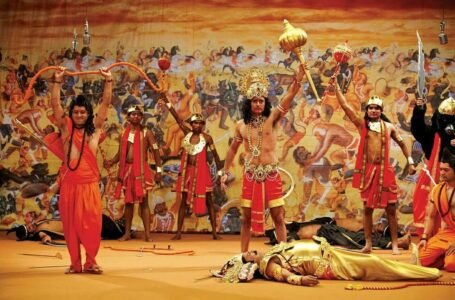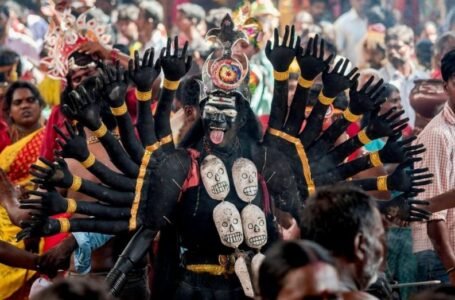The enigmatic realm of Vamachara Tantra
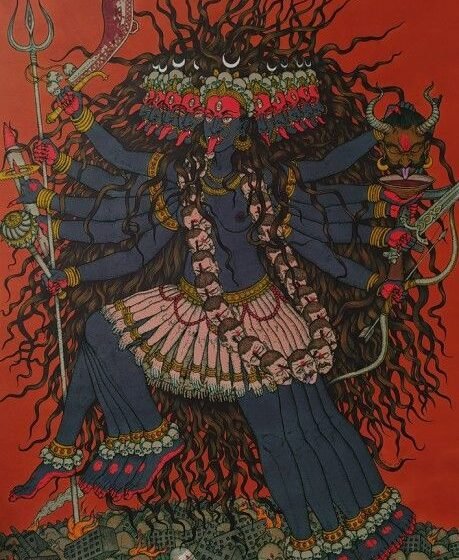
Vamachara translates to “left path” or “left-handed attainment.” It is a spiritual activity or manner of worship that is both radical and disrespectful to Vedic tradition. The techniques are mostly tantric in nature. Vamachara is one of the techniques recommended by Tantra to raise the Kundalini. Since Kundalini is the seat of the mortal man’s consciousness, it is located in the lower chakras of the body, particularly beneath the navel. This indicates that since lust and greed originate from this region, elevating one’s conscious level can cause Kundalini to ascend. When man becomes involved in Kama, Krodha, Madha, Lobha, Moha, Ghrina, Bhaya, Lajja, and Matsarya, Vamachara uncovers the veil of Maya. Man realizes who he really is once this curtain is lifted; Vamachara is the path to Self-Realization.
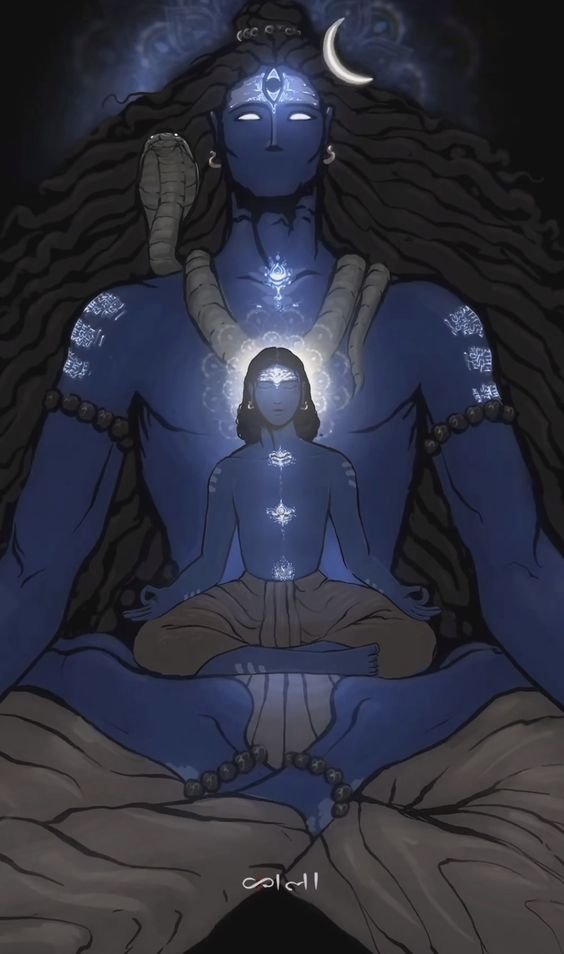
Vamachara presents aspects that are seen as “impure” by the mainstream Hindu religion to the gods. These include the use of meat, fish, drink and sacred sex. It may result in feelings of shame or blame, and misperception of the vast majority of Hindus, who adhere to strict standards for what is pure and is not.
In reality the practice of Vamachara is found in all Tantric systems; in fact, they are even found in Christianity where the church makes use of communion of wine and bread, in Gnostic cults, Kabbalah, Sufism and even Buddhism, where it is known as practice of Karma Mudra.
Similar Practices like Vajroli-Mudra, Sahajoli-Mudra, Amaroli-mudra also make use of “impure” elements of different beliefs in Hinduism to worship the Goddess.
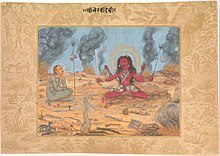
The Panchamakara or “5Ms” are 5 substances used in Vamchara Tantra. Literally translated they are: Madya (wine or alcohol), Mamsa (Meat), Matsya (fish), Mudra (parched grain) and Maithuna ( Sexual intercourse). The symbolic interpretation of these are various aspects of energy control, awakening Kundalini, and the union of masculine and feminine divine powers.
However, it is to be kept in mind that in all these practices, practitioners do not have sex or consume meat and alcohol just for fun but he is able to feel the fullness of spiritual non-dual experience.
Traditionally, there are many types of Sadhakas that exist with different Bhavas i.e. characters like, Divya-Bhava, Pashu-Bhava, Vira-Bhava etc. On one hand where Sadhaka of Pashu-Bhava offers prayers to the goddess by invoking her in an Idol, Yantra, sacred fire; the Vira-Bhava Sadhakas use real woman for invoking the goddess rather than the idol and yantra. They consider woman as a goddess. But whether it is a puja of goddess or a woman the essence of ritual is always to worship the goddess.
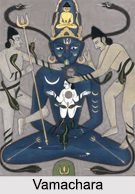
Traditionally, women from different Varnas can empower the Sadhaka in different ways. Woman from Brahmin Varna can bestow him spiritual knowledge, Kshatriya Varna can give him the power of control, Vaishya Varna can make him successful in trade and commerce, while Shudra varna can help him with everything illegal and criminal. If Sadhaka is able to transform the negative energy into spiritual, he will most certainly attain liberation or moksha from samsara.
In Vamachara any diety can be worshipped, but more often the Vama-Marga Tantra is associated with female devatas, preferring wrathful forms like Kali, Baglamukhi, Varahi etc.
Ideally, Vamachara Tantra should be performed in specific days, like full moon, new moon, eight day of bright and dark moon but some aghoris perform these rituals every day and hence they worship a particular form of Durga, Tiraskarani (Protector of practices of Vama-Marga).
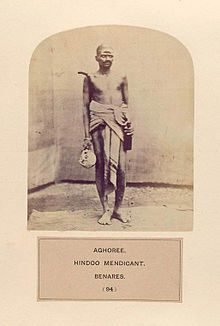
The rituals usually involve a Sadhak and a Sadhika but the rituals are such that it blurs the boundaries of a man and a woman and everyone feels the state of unity through the mystical powers of Shakti. In the rituals, wine is used in different vessels (Bhairava Patra, Guru Patra, Yogini Patra etc) and in the end the same is consumed as a prasad by everyone beyond all limitations of varnas.
As devi is called in the puja, they all are offered flowers of different colours like Yellow for Baglamukhi, Red for Tripurasundari and Blue for Kali etc. If one can’t perform these “impure” rituals he can mix rice with Kumkum/Sindoor along with the respective flower petals and put the mixture on a yantra. This would be symbolic of blood and semen. These rituals are a direct way to achieve Mukti.
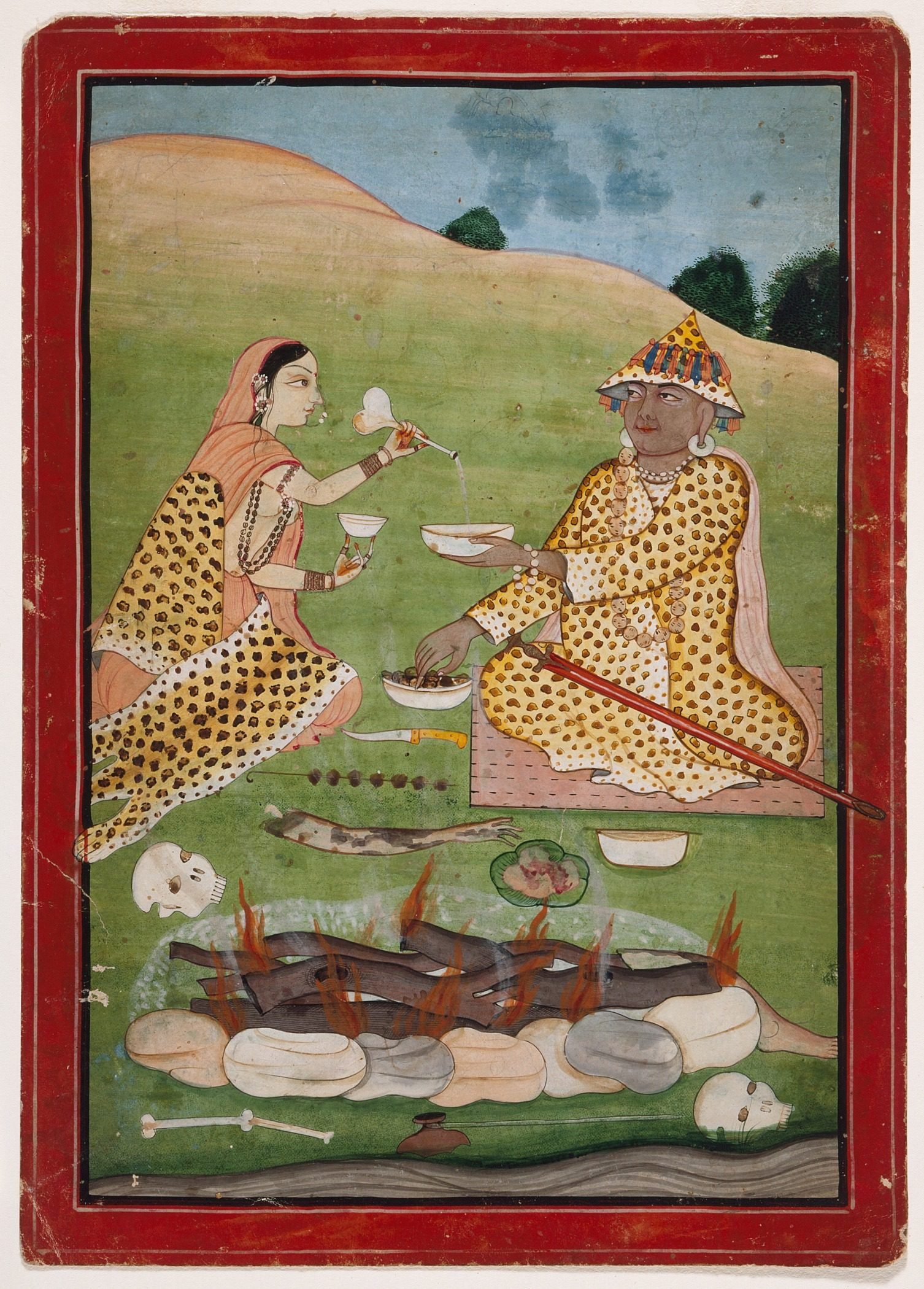
In Vamachara one must completely surrender himself to the guru and have full faith in him. He is seen as the Universal Mother Herself in the guise of a Guru. No spiritual progress can be made without a guru. Under his guidance, the devotee invokes Ugra-devis to be directed away from samsara. There comes a stage of Bhakti where the Universal Mother is visualized in one’s own heart and a sense so deep is felt inside him that he begins to see the goddess in every being around him. It is then that the same deities that once appeared in a fearful or Ugra form, now appear in benevolent or Saumya form such as Laxmi, Saraswati, Gauri etc. Hence the devotee’s ego is killed and he now dwells into “Manana” of the deity, where he engages himself into constant hearing and reading of glories of the lord. With this he slowly attains Atma-Gyaan where one comes to understand Maaya and falsity of the world, body, mind and ego. Through Dhyaana and Japa, he now comes close to Samadhi, that same trance or blissfull experience that he encounters everyday in deep sleep. After seeing reality directly through Niddhidhyaasana, the aspirant enters a state of total conviction (Nishtha) and no longer need external sources to understand reality. This direct experience of Bliss is known as ‘Aparoksha‘. Soon enough, the devotee reaches “Sahaj-Samadhi” where God now becomes Anubhava and he is not bothered by any sorrow, misery, joy, worry or rewards connected with it. Now he has attained liberation or Mukti, the ultimate goal of life and will no longer be reborn in this world or experience the miserable Samsara.
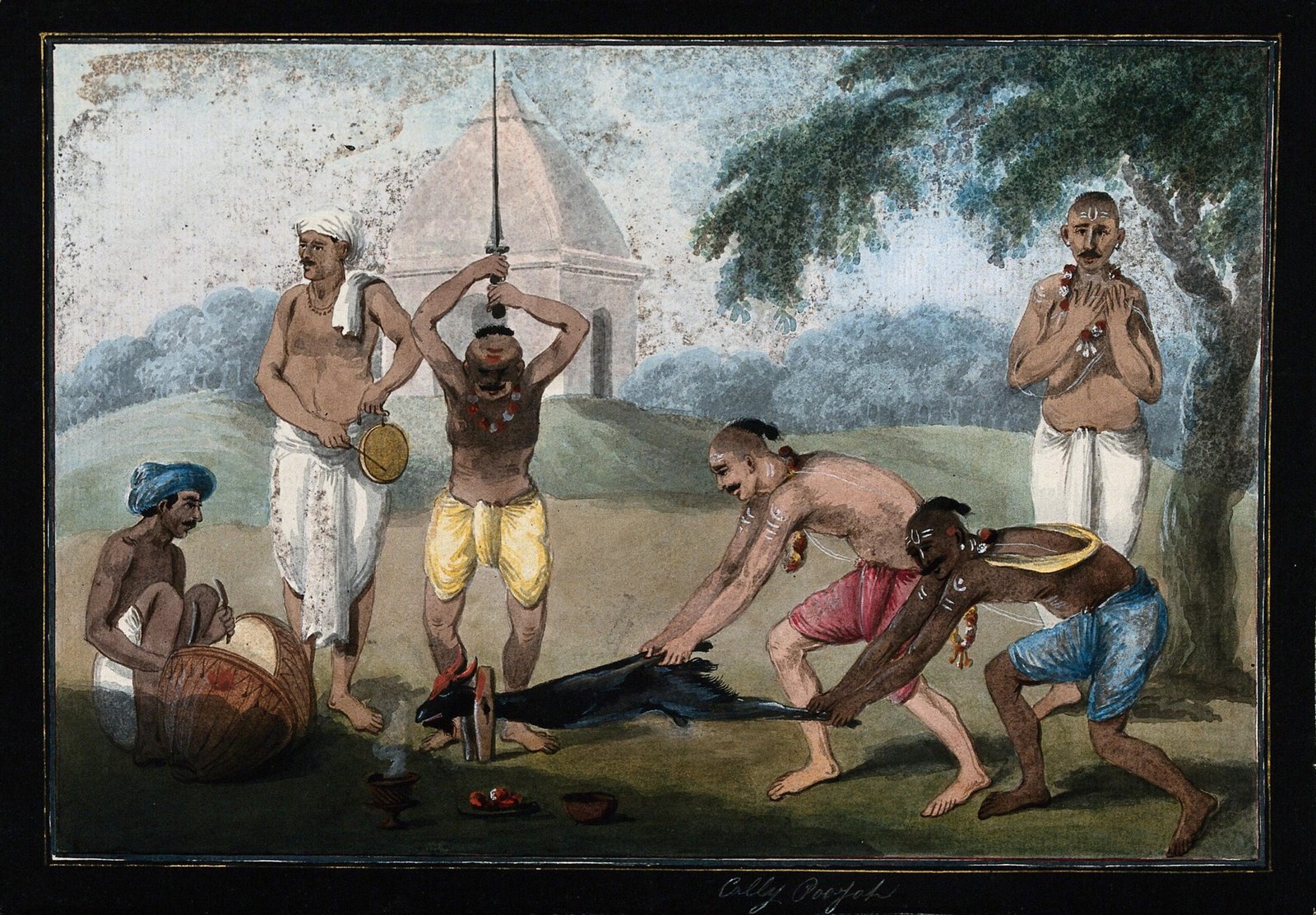
In Vamachara, two Shiva forms, Veerabhadra and Vatuka Bhairava, are the consorts of their respective Shakti forms. It is to be remembered that, Vamachara does not believe in equality between Shiva and Shakti, and instead considers Shakti to be greater. Bhairava and Veerabhadra are only regarded as the leaders of the Vamachara Shaktis’ army, rather than their consorts.
Vamachara Tantra is a part of an evolutionary process that is coming to an understanding to integrate with Natural world. Nature is perceived as a sacred manifestation of divine, with no distinction between mind and body. Vamachara shows true understanding of freedom and demonstrates how one can experience the integration process. Vamachara is particularly associated with Panchatattvas.
